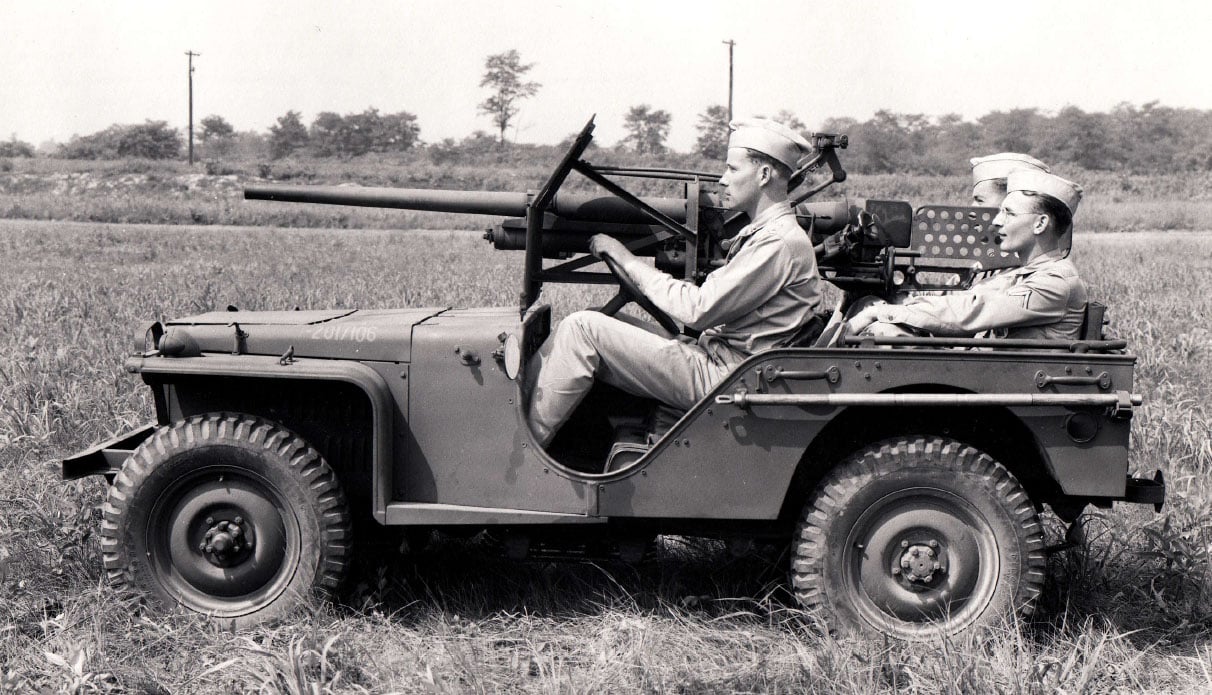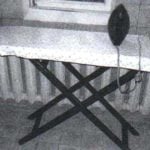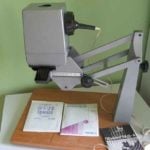 The fighting of the “blitzkrieg” — start-up phase of the Second world war in Europe, first and foremost, stunning successes Germanic tank troops, clearly showed Americans that they have, in fact, there is not only tanks, but also anti-tank weapons. That is, anti-tank guns from the Americans, of course, was, and is no worse than in other countries, but, like tanks, is clearly insufficient. Moreover, they are “smeared” for infantry units. No specialized anti-tank units or parts in the US army at that time did not exist.
The fighting of the “blitzkrieg” — start-up phase of the Second world war in Europe, first and foremost, stunning successes Germanic tank troops, clearly showed Americans that they have, in fact, there is not only tanks, but also anti-tank weapons. That is, anti-tank guns from the Americans, of course, was, and is no worse than in other countries, but, like tanks, is clearly insufficient. Moreover, they are “smeared” for infantry units. No specialized anti-tank units or parts in the US army at that time did not exist.
The first experimental anti-tank divisions were formed in 1941 during military maneuvers in North Carolina. To the mass formation of separate battalions of tank destroyers, which were subordinated to the General command of the U.S. army began on the eve of pearl Harbor. In Ford Meade (Maryland) on December 1, 1941, he organized “Protivotankovy center” (Tank Destroyer Center), on the basis of which was formed battalions of fighters of tanks. All this activity was encouraged and directed the chief of army staff, Lieutenant-General Leslie Maniram, who believed that a preferable anti-tank guns to fight enemy tanks than the tanks themselves. His purpose, he put the creation of highly mobile and well-armoured self-propelled anti-tank artillery, some aggressive force, designed not so much to defend against enemy tanks, how to seek out and destroy them. Not accidentally the unofficial motto of the battalions of tank destroyers was the phrase Seek-Strike-Destroy, which can be translated as “get — shot — kill”.
However, at that time in the United States was the only machine that met those requirements. In fact, the first attempt to make anti-tank artillery mobility was taken in 1940 when in Europe, the German tanks moved along the roads of France. Regular 37-mm anti-tank gun (without wheel travel, of course) set the barrel back at the rear of the body then the newest passenger of military vehicle-jeep “the jeep”. It turned out something like mechanical carts, but only with a gun. Recognizing the originality of the idea, the military rejected it, as after the installation of the gun in the back of the station wagon it was impossible to really place any calculation, nor ammunition. Moreover, the whole system was too fragile when shooting.
However, trying to install a 37-mm anti-tank gun on a wheeled chassis has not stopped. Was built two prototypes: unarmored armored T21 and T22. The last few later, after modifications and testing was adopted as the M8 armored car. As regards the first, as a base for the installation of the weapons used military four-wheel drive car “Dodge” with the capacity of 0.75 t, better known under the name “Dodge 3/4”. When creating prototypes involved more cars of early releases. In the same series launched the installation on the chassis of the so-called 50-th family.
Gun, 37 mm mounted on the drawer unit installed in the stern of the vehicle body. Usually the gun was located in the trunk back, but the design was provided by firing at 360°. When firing forward, the windshield was leaned back on the hood, where there were two pillars and a pair of locking hooks. The elevation of the guns was as follows: declination -10°, elevation +15°. The gun ammunition was located in the boxes of tapes on both sides of the wheel arches. Above the niches on the sides there were seats for two members of the gun crew, a third was located on the seat beside the driver.
Under-mounted armament used cars modifications WC-51 and WC-52 (with winch option). Vehicle weight without cargo -2315 kg was sufficient to provide him with stability when firing 37-mm cannon in any direction. The stability of the machine was facilitated by the design of the Parking brake “Dodge”. He was a band and acted on the brake drum mounted on the end of the transmission output shaft. In this block all four wheels of the car. No flip opener or the supports in the shooting has not been applied.

Self-propelled unit M6:
1 — hoist; 2 — rifle, M1; 3 — hook fastening of an awning; 4 — folding Board; 5 — the 37-mm gun; 6 — reflector; 7 — filler neck gas tank; 8 — bucket; 9 — the commander’s seat; 10 — boxes of shells; 11 — the gunner’s seat (stowed position); 12 — seat charging; 13 — driver seat
Installing the T21 was standardized under the designation M4 37mm Gun Motor Carriage (abbreviated to GMC — not to be confused with the abbreviation of the company General Motors Co.), that is literally “motor carriage with 37 mm gun”, and in fact — self-propelled artillery. However, soon the designation was changed to 37 mm GMC M6, so as not to confuse the vehicle with the towing vehicle to the towed 37-mm cannons, which also played “Dodge 3/4”. Production units M6 launched at the plant of the Fargo Division of the Chrysler Corporation. Therefore, ACS is often called in the army Fargo, not M6. From April to October 1942, the factory shop left 5380 installations M6.
Developing this war machine, the Americans realized that anti-tank capabilities of 37-mm guns are severely limited and that in the case of the Germans new tanks this gun will be powerless against them. However, no other more powerful cannons of the Americans at that time were not. So for this role I decided to use a 75-mm gun М1987А3, representing a licensed version of the famous French cannon during the First world war. To give mobility weapon mounted on a high-speed crawler Cleveland Tractor Company (Cletrac). This machine was designed for use as an airfield tractor. Weapon covered with a shield, mounted aft of the chassis. Test T1 (such index has received new installation) began in late 1940 and in January 1942 the machine was standardized under the designation M5 3 inch Gun Motor Carriage. Planned order for 1580 units, but problems with the chassis slowed the start of serial production. By that time developed an anti-tank installation of the M10 to the chassis of a medium tank M4A2, and all work on the M5 stopped.
More fortunate self-propelled artillery installation, in which the base to accommodate the same 75-mm guns М1897АЗ used half-track armored personnel carrier M3 (more about him in the journal “modelist-Konstruktor” No. 5, 2001). The prototype T12 gun, covered with small, flat shield, mounted on the machine immediately behind the driving compartment. The angles horizontal guidance tools was 19° left and 21° right, vertical +10° to 29°. Anti-tank capabilities of this outdated weapon was limited to a distance of about 900 m. contributed to its efficiency in the defeat armored targets maneuverable and low rate of fire due to the presence of the piston stopper. However, the results of the tests ended in October 1941, recognized quite successful and the machine under the designation M3 75 mm Gun Motor Carriage launched into serial production. After some time the installation of upgraded cannons and machine received the designation МЗА1. Externally, both versions were identical. In standard self-propelled gun was equipped with a special box with a shield of large size, overlapping the full width of the hull of the armored vehicle. The first 86 combat vehicles installation party, still equipped with small shields, left the factory shop in August — September 1941. The release of the main series began in late February 1942 and ended in April 1943. Just firm Autocar manufactured 2202 combat vehicles of this type.

Self-propelled gun M3:
1 — the buffer drum; 2 — 75-mm gun; 3 — swab; 4 — mounting bracket awning; 5 — a box of ZIP; 6 — bucket; 7 — towing device; 8 — the commander’s seat; 9 — seat castle; 10 — tank; 11 — boxes of ammunition; a 12 — seat charging; 13 — seat gunner; 14 — driver seat
Baptism of fire of new antitank units were held in the Philippines. At the end of 1941 when the likelihood of war with Japan became increasingly obvious that the command of the U.S. army attempted to strengthen the defense of Islands. In November began the formation of the Consolidated tank group-armed light tanks M3. The group included self-propelled artillery support unit Consolidated field artillery brigade trehbatalonnogo composition — fifty 75-mm self-propelled guns M3, which was sent to the Philippines in November — December 1941. To identify the real anti-tank capabilities of the new ACS, as, however, and to test new theoretical propositions for combat tanks, failed. Meetings with the Japanese tanks were rare, and ACS are mainly used for the support of the American tanks and infantry, the benefit of 75-mm projectile had a rather strong explosive activity. The battle for the Philippines, as we know, ended with the defeat of American troops. Latest ACS M3 were wrecked during the fighting on the Peninsula of Bataan. It should be noted that the majority of the Japanese self-propelled guns were repaired and put into operation. They have served in the Philippines until 1944 were used against American troops and all were destroyed.
The first meeting of Americans with the Germans took place in North Africa. In November 1942 during operation “Torch” on the African continent landed, six separate battalions, tank destroyers, but only one of them—601-minutes — was equipped with a 37 mm M6 ACS and 75-mm self-propelled guns M3. All the rest were armed with more powerful and modern military machine M10.
It is obvious that North Africa suffered a complete collapse, the provisions of field manual anti-tank piece, which read, inter alia, that “units of tank destroyers designed for active operations against armored forces of the enemy.” For this kind of action MB did not fit completely: armed and security of this war machine was already unacceptable to late 1942 — early 1943. SAU M6 quickly withdrew from the anti-tank units and reclassified in “native weapons” — Weapons Carrier. Some machines simply disarmed, turning into a conventional transport. While a certain amount of the released 37-mm guns on ship installations mounted in the body half-track armored personnel carriers. As antitank weapons did not use them, but the firepower of motorized infantry thus somewhat strengthened.
Unlike North Africa, in the Pacific theater of war SAU M6 was used until the end of 1943, mainly due to the absence of the Japanese modern tanks. Recent facts of combat use of these machines belong to 1944. They were armed with several divisions of troops of the Free French.
As for the 75-mm self-propelled guns M3, its North African combat debut had somewhat more success than the MB. However, many commanders interpreted the provisions of the Statute too literally, especially in terms of aggressiveness of action mobile anti-tank units. In the result, M3 was left in an open counterattack against the German tanks, which led to heavy losses.
In March 1943, 601 th battalion of tank destroyers supported the 1st American infantry division, attacked by hundreds of tanks of the 10th Panzer division near El Gutara. Thirty enemy tanks, including two “Tiger”, was shot down, but the 601 th battalion lost 21 cars. This should take into account that the fire on the Germans were not only self-propelled anti-tank installation. The battle at El Gutara was the apogee of the career of SAU M3 as a tank destroyer. Soon the 601 th battalion re-equipped with M10 self-propelled guns, and M3 was converted into an ordinary armored personnel carriers.
However, for other purposes these machines continued to be used until the end of the war. The British, for example, used them in Italy and France in 1944, the units of the heavy armored vehicles as a means of fire support. The marine corps, the United States included M3 part mouth the divisional heavy weapons and successfully used in combat on Iwo Jima and Okinawa in 1945.
The story of the American tank destroyers would be incomplete without at least a brief mention of another fighting machine created in the USA, but in the army of this country and has never been used. Shortly after production began in April 1942 75-mm self-propelled guns M3 at Aberdeen proving ground were tested half-track tank destroyer armed with 6-pounder (57-mm) antitank gun, or rather, its American license M1. This machine received the designation T48 57 mm Gun Motor Carriage, was developed at the initiative of the mixed Anglo-American Commission on arms and by design last she had to do in the US army and the UK. However, the Americans were already planning the replacement of its 75-mm self-propelled guns M3 to M10 more powerful, and 57-mm tank destroyer, they were not needed. Therefore, in December 1942, the firm Diamond T Company started the production of the T48 only for the British.

By linking such T48 M3. Gun M1, equipped with a box-like shield was installed for the Department of management. The calculation tools and 99 rounds of ammunition was located in the aft part of the body. Horizontal angles pointing guns stood at 27,5° to the side, and vertical from -5° to +15°.
During 1943 the factory shop left 962 self-propelled guns of this type, of which 680 went to England. The remaining States, 282 machine was soon converted to a standard armored МЗА1. However, in England T48 not came to the court: a 57-mm gun could not effectively fight the German heavy tanks — its ammunition was no piercing projectiles. Besides the British at that time relied on the new 17-pound anti-tank gun. Therefore, the British hastened to smuggle 650 cars in the USSR.
In the red Army, self-propelled guns received the designation SU-57. They were armed with three self-propelled artillery brigades: 16th, 19th and 22nd. The latter was later converted in the 70th guards self-propelled artillery. Each brigade had in its composition of 60-65 units of SU-57. The remaining vehicles entered service in the reconnaissance units of the red Army. In their composition they were used particularly effectively, being essentially an armoured personnel carrier with power weapons. As anti-tank, the means by 1944, ACS T48 hopelessly outdated. In addition to the red Army, this car was being used and the Polish Army is 15 units of SU-57 was handed to the poles, who formed them 7-th separate battalion of self-propelled artillery.
M. BARYATINSKY



